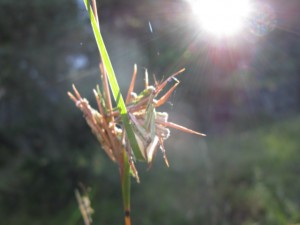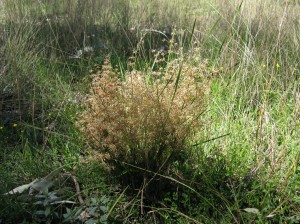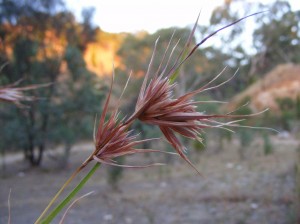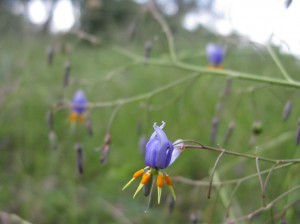Conservation of Box Gum Grassy Woodlands on the North West Slopes of NSW is best achieved through on-farm management of high quality remnant patches.
Native vegetation on farms, particularly woodlands and little disturbed grasslands on gently sloping country, can be important for biodiversity conservation and for providing ecosystem services. Conservation of Box Gum Grassy Woodlands on the North West Slopes of NSW is best achieved through on-farm management of high quality remnant patches.
Key findings:
- Studies conducted on-farm showed that parts of the farm that are not grazed by livestock are important for creating habitat variety, and are best targeted for protection, restoration and regeneration.
- Woodland vegetation that was not grazed by livestock made a large contribution to regional plant diversity, despite its very limited extent in the landscape.
- Native pastures regenerating after cultivation re-established total species densities comparable with those of uncultivated native pastures 10–25 years after the last cultivation, and comparable native species densities 15–30 years after the last cultivation.
- Data collected on-farm showed that the composition of grazed native pastures was quite uniform, with species comprised of a limited suite of grazing-tolerant, native and exotic grasses and forbs.
- Our data also suggest that the relationship between livestock grazing and plant conservation is antagonistic.
Conservation efforts at the ecological community level need to focus on communities that are under-represented in the reserve system due to their occurrence on low sloping fertile land — in particular, box gum grassy woodlands. Specifically: landholders should consider any such remnant vegetation for conservation management.
Findings and recommendations from these studies were developed into an EverGraze Action to assess conservation value of native vegetation on-farm, and a guide to assist management of these areas is provided here.
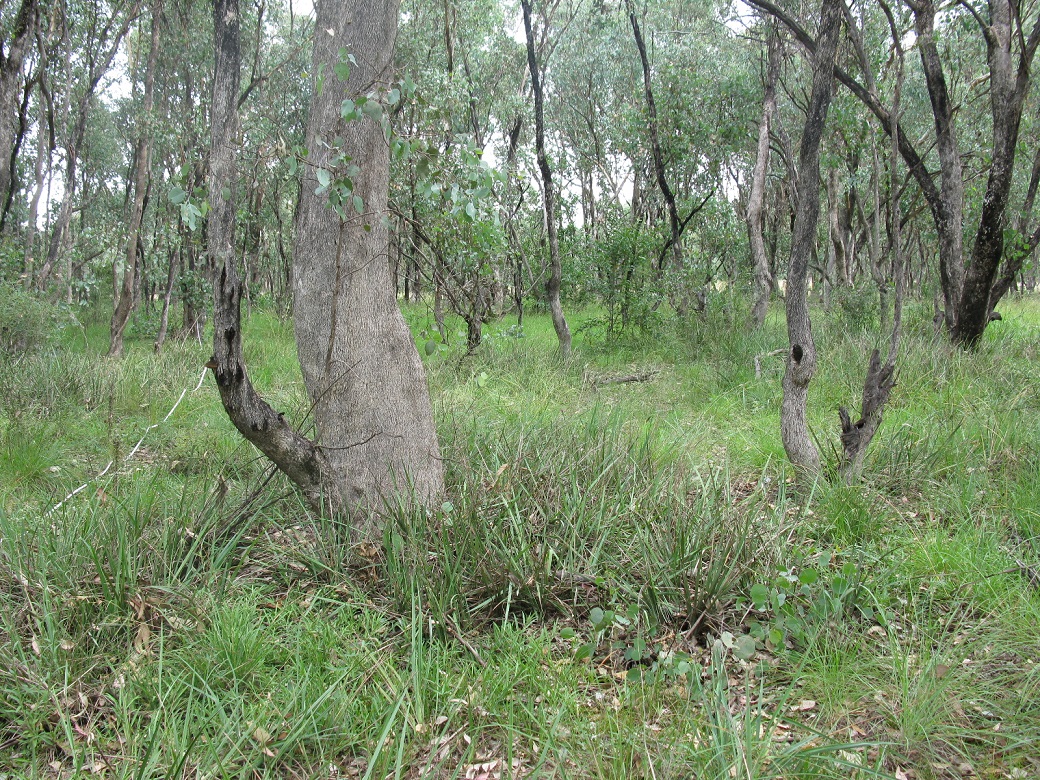
Read more about this research
The issue
The wheat–sheep belt of NSW is a productive agricultural region. However, it is also a region in which native vegetation has been fragmented, degraded or lost. Appropriate management of the remaining native vegetation on farms, while still maintaining the most productive areas for driving profitability, is vital for the conservation of biodiversity in these landscapes. The challenge is to assist producers to identify on-farm areas that may be suitable for conservation.
Conservation of Box–Gum Grassy Woodlands in NSW
Much of the land modified by agriculture on the North West Slopes of NSW was previously ‘White Box – Yellow Box – Blakely’s Red Gum Grassy Woodland’ (hereafter Box–Gum Grassy Woodland). This ecological community is poorly reserved, and exists only as small remnants in fragmented landscapes. Box–Gum Grassy Woodland (Figure 1) provides habitat and refuge for many native fauna and flora species, and the persistence of this ecological community (and the diversity of species that comprise it) is dependent on conservation and enhancement of the scattered remnants left in the landscape, as well as restoration and rehabilitation of degraded areas that were formerly Box–Gum Grassy Woodland. These areas are not well represented in the NSW state or national reserve system, or on travelling stock routes (TSRs).
Box–Gum Grassy Woodlands occur on moderately to highly fertile clay or loam soils on the tablelands and western slopes of the Great Divide from central Queensland, through NSW to central Victoria. They are dominated by eucalypts, typically white box (Eucalyptus albens), yellow box (E. melliodora) and Blakely’s red gum (E. blakelyi), but also sometimes by grey box (E. microcarpa and E. moluccana). They have an open canopy (sparse trees), a sparse shrub layer, a continuous cover of grass tussocks and a variety of herb species. The ‘white box – yellow box – Blakely’s red gum grassy woodland and derived native grassland’ is listed as a Critically Endangered Ecological Community under the Commonwealth Environment Protection and Biodiversity Conservation Act 1999 and as an Endangered Ecological Community under the NSW Threatened Species Conservation Act 1995.
Denser woodlands with less grass in the understorey and a denser shrub layer that occur on more siliceous soils, are less extensively cleared and are better represented in the region’s reserves.
Derived grasslands
Derived grasslands are grassy woodland communities that have had the tree layer removed, but in which a relatively intact native understorey remains (Figure 2). These communities, like woodlands, exist in a variety of conditions. On the North West Slopes of NSW, native pastures are derived grasslands and are used for livestock grazing. This is an extensive land-use that, depending on management history, can range from intact native ground layers with many native forbs (i.e. non-grass herbs) typical of Box Gum Grassy Woodland, to pastures dominated by exotic grasses and forbs with little resemblance to the understorey of the original community.
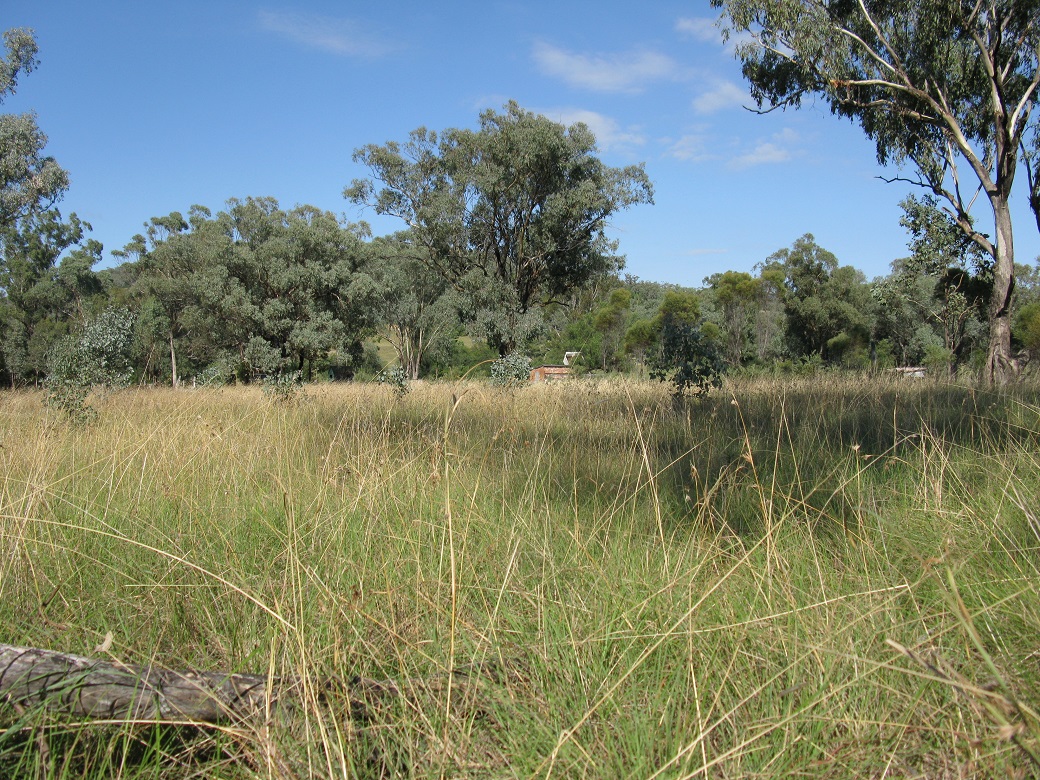
Native vegetation on-farm
Native vegetation on-farm, particularly woodlands and little disturbed grasslands on gently sloping country, can be important for biodiversity conservation and for providing ecosystem services. While on-farm areas managed for biodiversity may contribute to conservation objectives at farm and landscape scales, these areas will also contribute to outcomes of ground cover management, reduced soil erosion and whole-farm water balance.
Furthermore, the location of the region’s conservation reserves is predominantly in hilly terrain at higher altitude, with few reserves in gently sloping areas at lower elevation. Hence, as farmland occupies the majority of low sloping fertile land, on-farm conservation management has a vital role in plant conservation in the region. To allow for the conservation of plant diversity at regional scale, biodiversity conservation on agricultural land is a vital link between the formal reserve system (e.g. National Parks) and the broader landscape.
Why are farms so important for Box–Gum Grassy Woodland conservation?
Owing to their occurrence on productive agricultural land, Box Gum Grassy Woodlands are the region’s most extensively cleared and modified ecological community, and are under-represented in the region’s national parks and nature reserves. Most of the gently sloping or flat lands on which Box Gum Grassy Woodlands once occurred is farmland. For this reason, on-farm management has the greatest potential for conservation of Box Gum Grassy Woodlands, through protection of remnants and management of derived grasslands for understorey species diversity and natural recruitment of woodland trees. The Australian government has previously had an Environmental Stewardship Program, enabling landholders to receive payments for managing areas of Box Gum Grassy Woodland for biodiversity conservation (check the Caring for Our Country website for current details).
What was done
On-farm monitoring
Plant diversity is threatened in many Australian agricultural landscapes. While there is a good understanding of the effects of grazing and agricultural management on plant diversity at the site scale, we have less understanding of plant diversity patterns across larger spatial scales.
There is a growing interest in plant diversity in native pastures, and its potential role in both biodiversity conservation and sustainable, productive grazing systems.
A series of studies were undertaken between 2008 and 2011 to determine the plant conservation value of vegetation on farms grazed by both sheep and cattle. In particular, the studies aimed to:
- provide new information on the diversity, phenology and ecology of native perennial pastures;
- investigate the biophysical and management determinants of grassy vegetation composition in the region;
- evaluate the likely economic impact of implementing different plant conservation strategies, and
- provide region-specific plant conservation recommendations, including on-farm options.
Analyses of flora survey database
Key conservation issues for native vegetation in the region were identified through analysis of systematic plot database records containing data from 1073 surveys from the NSW Office of Environment and Heritage (NSW OEH).
Flora survey of sites
Surveys were made of 143 grassy woodland sites across four land-use categories (previously cultivated native pastures, never cultivated native pastures, grazed woodlands and ungrazed woodlands) on the North West Slopes of New South Wales to test the influence of biophysical and management variables on plant composition and conservation value, with a focus on the extensive native pastures that comprise much of the agricultural matrix. Management and land use history data were incorporated to explain current vegetation patterns and generate knowledge such as how long it takes species richness in native pastures to recover.
Paired site studies
Vegetation composition in paired grazed and ungrazed plots was monitored in native pastures over 2.5 years to investigate recovery of species. Intensive surveys were used to compare species richness of grazed areas on-farm with that of ungrazed areas of adjacent public land to assess potential of on-farm areas for conservation of understorey species.
What was found
Analyses of flora survey database
The OEH database analysis highlighted some key conservation issues. Native vegetation composition in the region is controlled by two major gradients: a climate gradient; and a slope – soil depth gradient.
Furthermore, the region’s conservation reserves are predominantly located in hilly terrain at higher elevation, with few reserves in gently sloping areas at lower elevation. Hence, as farmland occupies the majority of low sloping fertile land, on-farm conservation management has a vital role in plant conservation in the region. To allow for the conservation of plant diversity at regional scale, agricultural lands must successfully integrate biodiversity conservation, or a suite of reserves will be needed in areas of low relief, or preferably both.
Flora survey of sites
The survey of 143 sites across four land-use categories (previously cultivated native pastures, never cultivated native pastures, grazed woodlands and ungrazed woodlands) revealed that livestock grazing, fertiliser application and tree cover were poorly correlated with total species densities (i.e. the number of ground layer species in a 20 × 20 m area), but were correlated with native and exotic species densities.
Vegetation composition was strongly related to agricultural intensity, with co-varying gradients of decreasing tree cover and time since cultivation on the one hand, and increasing amount and duration of fertiliser use and grazing intensity on the other. Climate was secondary to agricultural intensity in explaining farmland plant composition, contrasting with the OEH database analysis, where climate best explained compositional patterns. Regional species accumulation curves showed that ungrazed woodlands accumulated the most species across the region, and native pastures accumulated the least, reflecting a high degree of compositional homogeneity in native pastures. Gamma diversity contribution analyses indicated that that both grazing and clearing may be influential in the homogenisation of pasture composition. No rare or uncommon native species were found in pastures that were not also found in grazed and ungrazed woodlands.
Overall, this study showed that pastoral management had a consistent influence on vegetation composition that was not conducive to the conservation of rare or infrequent native vascular plant species in the region. Woodland vegetation that was not grazed by livestock made a large contribution to regional plant diversity, despite its very limited extent in the landscape.
Native pastures regenerating after cultivation re-establish total species densities comparable with those of uncultivated native pastures 10–25 years after the last cultivation, and re-establish comparable native species densities 15–30 years after the last cultivation.
Paired site studies
Vegetation composition in paired grazed and ungrazed plots was monitored in native pastures over 2.5 years. Exclusion of livestock grazing did not influence composition over this period.
Intensive surveys on one Proof Site farm and adjacent public land with a mosaic of different land-uses revealed that grazed and ungrazed woodlands had similar species richness to native pastures at the quadrat and stand scale, but woodlands were more species rich at the landscape scale. Importantly, those parts of the farm that were not grazed by livestock were important for understorey plant diversity at the landscape scale.
The numbers of species recorded in native pasture varied greatly with season and inter-annual rainfall. Spring surveys recorded the highest numbers of species, though species numbers in summer were not significantly lower, and a peak in species numbers was not evident in the 2009 drought year. Grazing exclusion had a minimal effect on species detection probabilities and pasture composition. Spring surveys in years of average or above average rainfall were likely to provide the best conditions for the detection of annuals and species that regenerate from buds at or below the soil surface.
Ungrazed woodland patches had species composition that contained unique species, showing that the composition of each of these ungrazed woodland patches in the landscape was distinct, and had a high contribution to overall landscape diversity. Both tree removal and livestock grazing have reduced habitat heterogeneity in the landscape. The results show that native pastures grazed by livestock do not support a suite of species not found elsewhere in the landscape. There were no rare or uncommon native species found in pastures that were not also found in the woodlands. Hence, it is likely that not all agricultural landscapes in south-eastern Australia are similar in their landscape diversity patterns and so findings in this study should be used only as a guide elsewhere.
The results indicate that the relationship between livestock grazing and plant conservation is antagonistic.
Crunching the numbers
A modelling approach was used to determine the opportunity costs of setting aside areas of high conservation value woodland on farms for conservation and excluding livestock grazing. This analysis showed that the cost of on-farm conservation management was substantial and that incentives and stewardship payments of $100–200 ha–1 year–1 will be required if conservation management through set aside land is to be widely adopted.
Putting the research into practice
The conservation of Box Gum Grassy Woodland will require the:
- conservation and protection of existing high quality remnant vegetation,
- restoration of remnant vegetation that has been degraded by livestock grazing, and
- regeneration of woodland in areas of native pasture that have remained relatively free of fertilisation and cultivation.
Clearly, the studies conducted here support the concept that conservation of Box Gum Grassy Woodland on-farm will make a valuable contribution to the national reserve system and assist to maintain biodiversity at the landscape scale. If you think you have an area on your farm that is suitable for on-farm conservation, then a set of questions can quickly determine your next course of action. If you can answer ‘yes’ to each of the following series of questions, then it is highly likely that your area is worth conserving.
- Are you interested in identifying and conserving areas of high conservation value on your farm?
- Do you have native vegetation that is (or was once) Box Gum Grassy Woodland (e.g. grazed woodland, native pasture)?
- Do you have areas of vegetation with no history of cultivation or fertiliser, and no disturbance other than by grazing or fire?
- Are any of these areas on flat or low sloping country?
- Do you have areas with some key indicator species (as shown below in Figure 3)?
| Figure 3. Key Indicator species | |
The EverGraze Action – Assessing conservation value of native vegetation in Northern NSW, can be used to identify and prioritise management of different vegetation types commonly found on farms on the North West Slopes of NSW.
What it all means
The results highlight the homogeneity of composition of native pastures, which are comprised of a limited suite of grazing-tolerant, native and exotic grasses and forbs. There were also no rare or uncommon native species in pastures that were not also found in the woodlands.
- The great diversity of native taxa in the region and the suite of exotic species that have become naturalised in native vegetation provide a context for studies of plant conservation on farms in the region.
- The numbers of species recorded in native pasture varied greatly with season and inter-annual rainfall and so short term grazing exclusion had a minimal effect on number of species observed and pasture composition.
- Conservation efforts in our study region should focus on the protection, restoration and regeneration of patches of woodlands in the landscape, and recognise that parts of the farm that are not grazed by livestock are important for creating habitat heterogeneity.
Acknowledgements
EverGraze is a Future Farm Industries CRC research and delivery partnership. The Tamworth EverGraze Proof Site team was led by Dr Sean Murphy (2010-2013) and Dr Greg Lodge (2007-2009) at the Department of Primary Industries, Tamworth NSW. An enthusiastic Regional Advisory Group consisting of farmers, consultants, extension officers and CMA staff provided significant input into the direction, management practices and interpretation of outcomes from the experiment and modelling to make them relevant to farmers.
Authors and contributors
Dr Sean Murphy, Department of Primary Industries, Tamworth, NSW.
Lester McCormick, Department of Primary Industries, Tamworth, NSW.
Further Information
- EverGraze Action – Assessing conservation value of native vegetation on farm in northern NSW (tool for land holders)
- EverGraze Booklet – Assessing conservation value of native vegetation on farm in northern NSW – A guide for assessing the conservation value of box gum grassy woodlands on the Northwest Slopes of NSW
- Schultz NL, Reid NC, Lodge GM and Hunter JT (2010) Conservation of plant diversity in native pastures on the North-West Slopes of NSW. In: Proceedings of the 25th annual conference of the Grasslands Society of NSW (eds C Waters and D Garden) pp. 114-5. The Grasslands Society of NSW Inc., Orange NSW.
- Schultz NL, Reid N & Lodge GM (2008) Studies of plant biodiversity on properties grazing sheep on the North-West Slopes of New South Wales. In: Proceedings of the 23rd Annual Conference of the Grassland Society of NSW Inc. (eds SP Boschma, LM Serafin and JF Ayres) pp. 135-6. The Grassland Society of NSW, Orange NSW.
- Schultz NL, Reid N, Lodge GM (2009) Conservation significance of plant biodiversity in native pastures on the North-West Slopes of NSW, Ecology in a Changing Climate: The 10th International Congress of Ecology. Ecological Society of Australia
- Schultz NL, Reid N, Lodge GM (2010) Plant biodiversity in agricultural landscapes: the ecological consequences of land sparing vs wildlife friendly farming in temperate Australia, Changing Gradients in Vegetation and the Environment: the 53rd International Association of Vegetation Science Symposium. Universidad Aut

